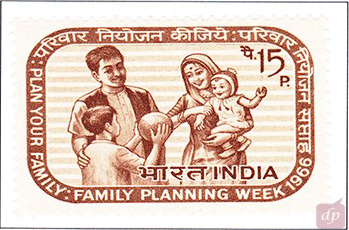Two-child norm? We don’t need it!
One-child policy is unviable and undemocratic. One has to turn to China to know what has and has not worked for the People’s Republic of China.

Jharkhand, in October, announced that any individual with more than two children will be disqualified from contesting civic body polls. There was a similar still-born attempt by the state in 2011 to penalise those with more than two children, though this move was never enforced. While it remains to be seen if Jharkhand will follow this policy this time, a unpalatable precedent was set by Assam earlier this year. The two-child policy, legislated in the north-eastern state, prohibits people with more than two children from applying to government jobs, standing for elections to state, panchayat and civic bodies. It also makes them ineligible for government schemes.
To know that one-child policy is unviable and undemocratic, one has only to turn to China and examine its various effects. In the essay Challenging Myths about China’s One-Child Policy, the authors observed that the dramatic economic boom and the social changes unleashed by rising income, levels of education and rapid urbanisation post-1978 are the factors behind low birth rate. These factors would have organically driven down birth rates even in the absence of state birth planning campaigns. And, after 35 years, in the face of an alarming population crisis, China had to revoke its one-child policy in 2015.
Coercive measures yield results at the cost of the fundamental rights of people; it violates a couple’s prerogative to a rights-based approach to family planning. This also takes us back to India’s commitment to a rights-based approach to family planning that was adopted after the International Conference on Population and Development (ICPD) in Cairo in 1994. Besides, to be able to look at development holistically is the hallmark of a democratic nation.
A paper by Prof Mohan Rao states that previously when states like Rajasthan, Haryana and Madhya Pradesh implemented these coercive child policies, we saw an increase in sex-selective abortions, women being deserted, and women giving their children up for adoption. The law in these states also debarred women with more than two children from contesting panchayat elections. Therefore, family planning based on disincentives and incentives can be conclusively declared anti-women and anti-poor; it compromises a couple’s reproductive rights, and India’s commitment to a rights-based approach to family planning.
In Sri Lanka, fertility rates were stabilised by simply increasing the age at marriage, a move that was made more effective by ensuring girls were educated.
Bangladesh too succeeded by mobilising a cadre of village-level health workers to build awareness and acceptability of family planning. And from within the country, we have the striking example of Kerala’s total fertility rate (TFR) that dropped from three in 1979 to 1.8 in 1991; this was achieved not by coercion but by improving education, women and child welfare, and development.
Data analyses from the last two census reports project a declining trend in population growth across all religions. Close to 24 states and union territories have already achieved replacement level fertility; therefore, it would be safe to say that reports and statements of an impending population explosion or demographic catastrophe are unfounded.
Jharkhand too is in the safe zone and is seeking the fast-track route in their haste for development. For, while the two-child policy is being considered for the state, it is important to note that their TFR has dropped consistently between 2005 and 2012 from 3.5 to 2.8 and they are likely to achieve replacement-level of fertility (i.e. 2.1) by 2018. A two-child policy runs the risk of jeopardising the effort of the state so far and it will not bring the growth and development they wish to see. What they need to do is to continue the effort towards improving indicators of development and the status of women.
Given the efforts of the Ministry of Health and Family Welfare (MoHFW) to increase the quality and uptake of spacing methods, the implications of a two-child norm would go on increasing dependence on sterilisations. Women also often rely on abortion as a proxy contraceptive, leaving them vulnerable to unsafe abortion methods. A recent study on the incidence of unwanted pregnancy and abortions revealed that 15.6 million abortions occur in India annually. The call for a two-child norm might further jeopardise women’s health by leaving them vulnerable to the risk of unsafe abortions. The evidence has spoken; we need to improve our contraceptive services so that women and couples can avoid pregnancies they do not want. This must be combined with increasing the age of marriage and ensuring that all girls are educated and have the opportunity to work and be financially independent.
In the larger picture, numbers do not matter, what matter is people and their life; however, most families, when given a choice, do not wish to have more than two children. Fertility is influenced by a variety of factors such as education, media influence, economic changes, urbanisation, and infant and maternal mortality rates. The delay in population stabilisation though is due to India’s stage in the demographic transition, as death rates and birth rates are just beginning to decrease simultaneously.
A nation that cannot provide women with their basic rights has no right to tell them how many children they should have. Women have exhibited unmatched grace and dignity in the face of patriarchal norms that deny them their basic rights; they are answerable to their families, their in-laws and now the state. We must not let the trend of a two-child norm to catch on or become the mainstay of our population policy; instead, we must focus on empowering our women with nutrition and education. Women’s rights should supersede any religious or cultural mandate and nobody has the right to dictate what women should or should not be doing.
